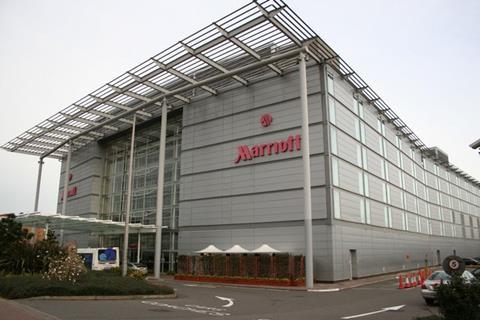[ad_1]
Marriott – the largest hotel chain in the world in terms of the number of available rooms – runs hotels from just shy of 8,000 properties, encompassing nearly 1.5 million rooms worldwide.
Sharon Xu is the director for Asia Pacific insurance at Marriott Risk Management and oversees operations in 26 countries and more than 700 hotels in the region.

The APAC region is characterised by its scale and diversity, in terms of language, culture, economic output and regulations. So when Xu noted that two nations within the region were producing higher employee work injury claims, she took quickly took steps to understand and manage the discrepancy.
“Our approach to risk at Marriott is often to start from looking at a consequence we see within the business. By looking at our consequences, it can help us understand how we can do better,” says Xu.
“Taking this approach means that we discovered that our employee work-injury claims for two territories in Asia were on an upward trend.”
Looking behind the data
Xu, who brings a background in broking herself, says she approached the firm’s broker to work together on discovering more and finding a solution.
“We started by analysing five years of claims data to help us understand the patterns within that data. We looked at the spread of claims in different hotels. These two territories, which do not have a large number of hotels, were having more employee work injury claims than the rest of the Asian region,” says Xu.
The first discovery was that one of these territories had strict local regulations that placed a large amount of obligation on the company to take responsibility over employee injury. “We therefore need to be prepared for more insurance claims,” she says.
The next stage of data analysis was to understand which departments were most affected.
Marriott has departments broken into areas such as housekeeping, concierge and operations (covering aspects like swimming pools and gyms). “We analysed the claims across those different functions to help us understand the spread of the claims, and what is really causing the employee injuries,” says Xu.
“We started by analysing five years of claims data to help us understand the patterns within that data”
“Is it because we have the wrong people in certain positions? Or is it related to the working environment? How do we make our locations safer then? Or are the higher claims just a result of the region’s strict laws? Our broker then helped to issue a report that describes the risk allocation between the different causations.
Xu says Marriott decided to implement initiatives to see if this could control the rate of employee injury claims in the two outlier territories.
“With brokerage support, we organised training in hotels in the regions. We used role-play-based training and case studies. People play different roles and look at aspects from different perspectives.
”We performed this training with highly active participation from employees from each country. Now the training has been completed, we continually follow up with them.”
In terms of a timeline of completion, Xu says it has taken nearly a full year from initial risk identification to the final training. There were four months of data analysis and working with a broker and insurer to form a course of action.
There were then two to three months of back-and-forth to agree on the training approach, then the training itself.
Lessons learnt
Xu states that the approach has provided a measure of control over employee injury claims.
“Risk management is a circle – it never ends. We monitor the claims continuously and go back to our broker to revisit the data. In risk management, it is important to understand the trends and how we can improve,” says Xu.
“So far, it seems that our recommendations are working, but the most important aspect is that we now have a better understanding of the trends within our business.”
“Risk management is a circle – it never ends. We monitor the claims continuously£
Xu stressed the importance of having good relationships with a broker and working together on such projects. It is also crucial to engage senior leadership and ensure strong communication with them on new developments.
“I spoke to our region’s president to obtain support, which enabled us to mobilise our resources, and ensured that people’s attention was drawn to the training programmes. We still need time to analyse the data after the training has taken place.
”I am taking a longer view and analysing over the next few years, but the immediate impact is that the situation is no longer deteriorating,” Xu says
[ad_2]
Source link
